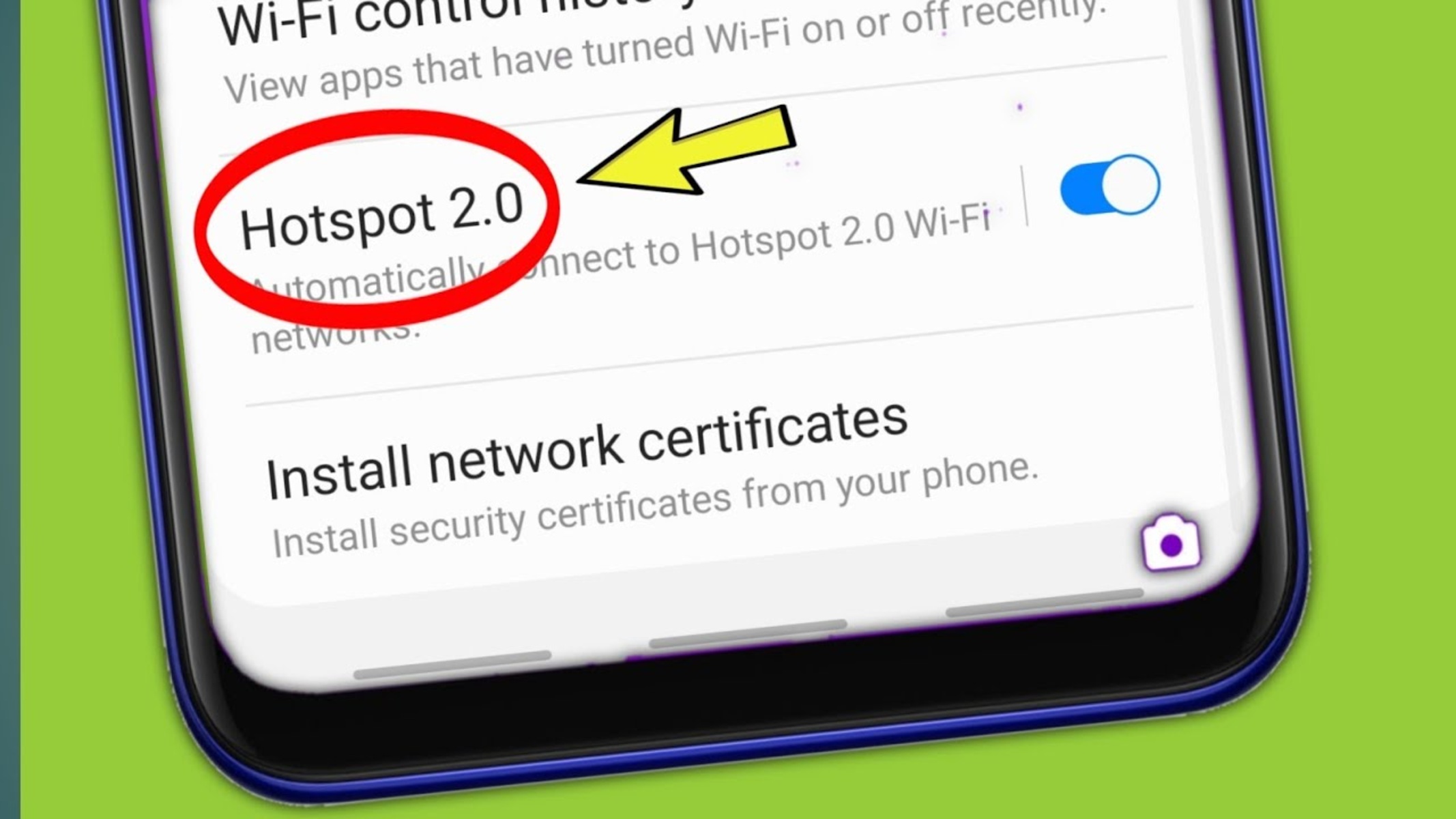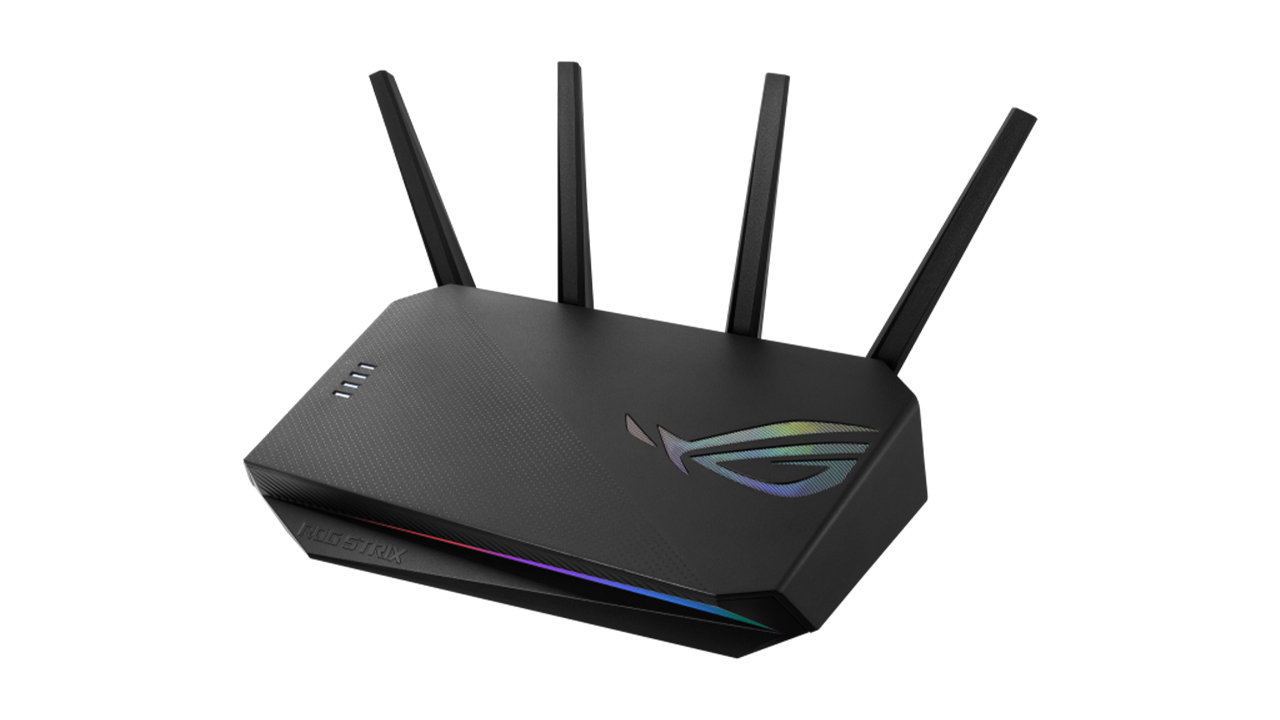Introduction
Hotspot 2.0 is a game-changer in the realm of Wi-Fi connectivity, especially for Android users. This innovative technology aims to revolutionize the way we connect to Wi-Fi networks, offering a seamless and secure experience for users on the go.
Hotspot 2.0, also known as Passpoint, has been designed to address the limitations and inconveniences associated with traditional Wi-Fi networks. By automating the connection process and enhancing security measures, Hotspot 2.0 ensures that users can effortlessly connect to Wi-Fi networks without compromising on their privacy or experiencing frustrating connectivity issues.
In this article, we will delve into the features and functions of Hotspot 2.0 on Android devices, exploring how this technology works, its benefits, and the steps to set it up. Additionally, we will discuss the practical aspects of using Hotspot 2.0 for seamless Wi-Fi connectivity and provide insights into troubleshooting common issues that users may encounter.
As we navigate through the intricacies of Hotspot 2.0 on Android, it becomes evident that this technology represents a significant advancement in the way we experience and interact with Wi-Fi networks. Let's embark on this journey to unravel the potential of Hotspot 2.0 and discover how it can elevate our Wi-Fi connectivity experience to new heights.
What is Hotspot 2.0?
Hotspot 2.0, also known as Passpoint, represents a groundbreaking advancement in Wi-Fi technology. It is designed to address the limitations and complexities associated with traditional Wi-Fi networks, offering a more seamless and secure connectivity experience for users, particularly on Android devices.
At its core, Hotspot 2.0 aims to streamline the process of connecting to Wi-Fi networks, eliminating the need for manual selection and authentication. This is achieved through the implementation of the IEEE 802.11u standard, which enables automatic network discovery and selection based on predefined preferences and credentials.
One of the key features of Hotspot 2.0 is its ability to provide a secure and seamless connection to Wi-Fi networks, akin to the experience of connecting to cellular networks. By leveraging the WPA2-Enterprise security protocol, Hotspot 2.0 ensures that users can connect to trusted networks without compromising their privacy or security.
Furthermore, Hotspot 2.0 introduces the concept of Passpoint networks, which are essentially Wi-Fi networks that have been pre-validated and certified by service providers. This validation process ensures that Passpoint networks adhere to industry standards for security and performance, offering users a level of assurance when connecting to these networks.
In essence, Hotspot 2.0 represents a paradigm shift in the way we interact with Wi-Fi networks. By automating the connection process, enhancing security measures, and introducing the concept of Passpoint networks, Hotspot 2.0 aims to deliver a more seamless, secure, and user-friendly Wi-Fi connectivity experience for Android users and beyond.
How Does Hotspot 2.0 Work on Android?
Hotspot 2.0 on Android operates through a series of intricate yet automated processes, aiming to simplify and enhance the Wi-Fi connectivity experience for users. At its core, Hotspot 2.0 leverages the IEEE 802.11u standard to enable seamless network discovery and selection, eliminating the need for manual intervention when connecting to Wi-Fi networks.
When an Android device equipped with Hotspot 2.0 capabilities enters the vicinity of a Passpoint-enabled Wi-Fi network, the device initiates an automatic search for available networks. This process, known as network discovery, allows the device to identify Passpoint networks within range based on predefined preferences and credentials.
Upon identifying a Passpoint network, the Android device utilizes the information stored in its secure credential repository to authenticate and connect to the network automatically. This repository, often managed by the device's operating system or network provider, securely stores the necessary credentials for accessing Passpoint networks, ensuring a seamless and secure connection process.
Furthermore, Hotspot 2.0 employs the WPA2-Enterprise security protocol to establish a robust and encrypted connection between the Android device and the Passpoint network. This protocol, known for its high level of security, safeguards the data transmitted over the Wi-Fi network, mitigating potential security risks and unauthorized access.
Additionally, the concept of Passpoint networks plays a pivotal role in the functioning of Hotspot 2.0 on Android. Passpoint networks, validated and certified by service providers, offer users a level of assurance regarding the network's security and performance. This validation process ensures that users can connect to Passpoint networks with confidence, knowing that they adhere to industry standards for security and reliability.
Overall, Hotspot 2.0 on Android works by automating the process of network discovery, selection, and authentication, while prioritizing security and user convenience. By leveraging advanced standards and protocols, Hotspot 2.0 aims to redefine the Wi-Fi connectivity experience, offering Android users a seamless, secure, and hassle-free approach to connecting to Wi-Fi networks.
Benefits of Hotspot 2.0 on Android
Hotspot 2.0 brings forth a plethora of benefits for Android users, revolutionizing the way they connect to Wi-Fi networks and elevating their overall connectivity experience. Let's delve into the compelling advantages offered by Hotspot 2.0 on Android:
-
Seamless Connectivity: Hotspot 2.0 streamlines the process of connecting to Wi-Fi networks, eliminating the need for manual selection and authentication. This seamless connectivity experience ensures that Android users can effortlessly transition between Wi-Fi networks without encountering cumbersome login procedures or network selection challenges.
-
Enhanced Security: By leveraging the WPA2-Enterprise security protocol, Hotspot 2.0 prioritizes the privacy and security of Android users when connecting to Wi-Fi networks. This robust security framework encrypts data transmissions, mitigating potential security risks and unauthorized access, thereby fostering a secure connectivity environment for users.
-
Automatic Network Discovery: Hotspot 2.0 facilitates automatic network discovery, enabling Android devices to identify Passpoint-enabled Wi-Fi networks within range based on predefined preferences and credentials. This automated discovery process reduces the burden on users, allowing them to seamlessly connect to trusted networks without manual intervention.
-
Passpoint Networks Assurance: The concept of Passpoint networks, validated and certified by service providers, offers Android users a level of assurance regarding the security and performance of Wi-Fi networks. This validation process ensures that users can connect to Passpoint networks with confidence, knowing that they adhere to industry standards for security and reliability.
-
Effortless Roaming: Hotspot 2.0 enables effortless roaming between Wi-Fi networks, particularly beneficial for users on the go. Android devices equipped with Hotspot 2.0 capabilities can seamlessly transition between Passpoint-enabled networks without disruptions, ensuring a consistent connectivity experience across different locations.
-
Improved User Experience: With its emphasis on automation and security, Hotspot 2.0 enhances the overall user experience for Android users. By simplifying the connectivity process and prioritizing security measures, Hotspot 2.0 fosters a user-friendly environment, allowing users to leverage Wi-Fi networks with ease and confidence.
In essence, Hotspot 2.0 on Android offers a myriad of benefits, ranging from seamless connectivity and enhanced security to effortless roaming and improved user experience. This transformative technology redefines the way Android users interact with Wi-Fi networks, setting a new standard for seamless, secure, and user-centric connectivity experiences.
Setting Up Hotspot 2.0 on Android
Setting up Hotspot 2.0 on an Android device involves a series of straightforward yet pivotal steps to enable seamless and secure connectivity to Passpoint-enabled Wi-Fi networks. Here's a comprehensive guide to configuring Hotspot 2.0 on your Android device:
-
Device Compatibility: Ensure that your Android device supports Hotspot 2.0 functionality. While most modern Android devices are equipped with Hotspot 2.0 capabilities, it's essential to verify compatibility to leverage this advanced Wi-Fi technology.
-
Network Provider Support: Check if your network provider or carrier offers Hotspot 2.0 support. Some carriers may require specific settings or configurations to enable Hotspot 2.0 functionality on their networks. Contact your network provider for guidance on setting up Hotspot 2.0.
-
Accessing Network Settings: Navigate to the "Settings" menu on your Android device and locate the "Wi-Fi" or "Network & Internet" section. Within the Wi-Fi settings, you may find an option related to Hotspot 2.0 or Passpoint, depending on the device's interface.
-
Enabling Hotspot 2.0: Look for the option to enable Hotspot 2.0 or Passpoint on your device. This setting may be located within the advanced Wi-Fi settings or under a dedicated Hotspot 2.0 section. Toggle the switch to enable Hotspot 2.0 functionality on your device.
-
Credential Management: Some Android devices allow users to manage their Passpoint credentials within the device settings. You may have the option to add, view, or remove Passpoint profiles, which contain the necessary credentials for connecting to Passpoint-enabled networks.
-
Network Discovery and Selection: Once Hotspot 2.0 is enabled, your Android device will automatically initiate network discovery, identifying Passpoint-enabled Wi-Fi networks within range. The device may display these networks as Passpoint or Hotspot 2.0 networks in the available network list.
-
Authentication and Connection: When your Android device detects a Passpoint network, it will utilize the stored credentials to authenticate and connect to the network automatically. The connection process is seamless, eliminating the need for manual intervention or network selection.
By following these steps, you can effectively set up Hotspot 2.0 on your Android device, unlocking the benefits of seamless and secure connectivity to Passpoint-enabled Wi-Fi networks. This streamlined configuration process empowers users to leverage the advanced capabilities of Hotspot 2.0, enhancing their Wi-Fi connectivity experience on Android.
Using Hotspot 2.0 for Seamless Wi-Fi Connectivity
Hotspot 2.0 introduces a paradigm shift in the realm of Wi-Fi connectivity, offering Android users a seamless and secure approach to accessing Wi-Fi networks. Leveraging this advanced technology, users can experience a host of benefits that redefine their connectivity experience.
One of the key advantages of using Hotspot 2.0 for seamless Wi-Fi connectivity is the automation of the connection process. With Hotspot 2.0 enabled on their Android devices, users can bid farewell to the cumbersome task of manually selecting and authenticating Wi-Fi networks. The technology facilitates automatic network discovery and selection, allowing devices to identify Passpoint-enabled networks within range based on predefined preferences and credentials. This automated discovery process streamlines the connectivity experience, enabling users to effortlessly connect to trusted networks without the need for manual intervention.
Furthermore, Hotspot 2.0 prioritizes security, ensuring that users can enjoy a secure Wi-Fi connectivity environment. By leveraging the WPA2-Enterprise security protocol, Hotspot 2.0 establishes a robust and encrypted connection between Android devices and Passpoint networks. This advanced security framework safeguards data transmissions, mitigating potential security risks and unauthorized access, thereby fostering a secure connectivity environment for users.
The concept of Passpoint networks further enhances the seamless connectivity experience offered by Hotspot 2.0. Passpoint networks, validated and certified by service providers, instill a sense of confidence and assurance for users. This validation process ensures that Passpoint networks adhere to industry standards for security and performance, allowing users to connect to these networks with peace of mind.
Moreover, Hotspot 2.0 enables effortless roaming between Passpoint-enabled networks, particularly beneficial for users on the go. Android devices equipped with Hotspot 2.0 capabilities can seamlessly transition between networks without disruptions, ensuring a consistent and uninterrupted connectivity experience across different locations.
In essence, using Hotspot 2.0 for seamless Wi-Fi connectivity empowers Android users with a transformative connectivity experience. By automating the connection process, prioritizing security, and facilitating effortless roaming, Hotspot 2.0 sets a new standard for Wi-Fi connectivity, offering users a seamless, secure, and user-centric approach to accessing Wi-Fi networks.
Troubleshooting Hotspot 2.0 on Android
While Hotspot 2.0 on Android aims to deliver a seamless and secure Wi-Fi connectivity experience, users may encounter occasional challenges that require troubleshooting. Understanding common issues and their resolutions can empower users to effectively address connectivity concerns. Here are some troubleshooting tips for Hotspot 2.0 on Android:
-
Network Discovery Issues: If your Android device fails to detect Passpoint-enabled networks, ensure that Hotspot 2.0 is enabled in the device settings. Additionally, verify that the Passpoint network is within range and broadcasting its SSID. Restarting the Wi-Fi functionality or toggling Hotspot 2.0 settings may also trigger a new network discovery process.
-
Authentication Failures: In cases where the device struggles to authenticate with a Passpoint network, verify that the stored credentials for the network are accurate and up to date. If the issue persists, removing and re-adding the Passpoint profile in the device's settings can refresh the authentication process.
-
Interference and Signal Strength: Poor signal strength or interference from other wireless devices can impact the connectivity to Passpoint networks. Users experiencing connectivity issues should ensure that they are within an adequate range of the Passpoint network and minimize potential sources of interference.
-
Software Updates and Compatibility: Keeping the Android device's operating system and Wi-Fi-related software up to date is crucial for optimal Hotspot 2.0 functionality. Check for system updates and ensure that the device's software is compatible with Hotspot 2.0 standards and protocols.
-
Network Provider Support: If persistent issues arise, reaching out to the network provider or carrier for support can offer valuable insights and potential solutions. Some network-specific configurations or settings may require attention to ensure seamless Hotspot 2.0 connectivity.
-
Credential Management: Users should review and manage their Passpoint credentials within the device settings. Ensuring the accuracy and validity of stored credentials is essential for successful authentication and connectivity to Passpoint networks.
By addressing these common troubleshooting scenarios, Android users can overcome connectivity challenges and leverage the benefits of Hotspot 2.0 with confidence. Proactive troubleshooting and attention to detail can enhance the overall Wi-Fi connectivity experience, ensuring that Hotspot 2.0 operates seamlessly and securely on Android devices.

























